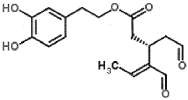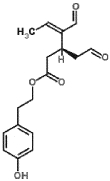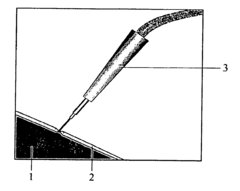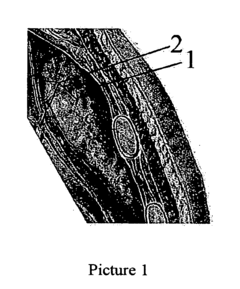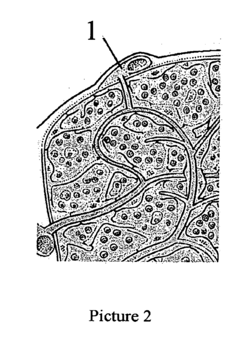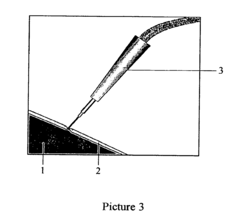Investigation of lithium orotate's role in myelin sheath integrity
Lithium Orotate and Myelin Research Background
Lithium orotate, a compound consisting of lithium and orotic acid, has gained significant attention in neuroscience research due to its potential neuroprotective properties. The investigation of its role in myelin sheath integrity represents a crucial area of study, as myelin is essential for proper nerve conduction and overall neurological function.
The research background of lithium orotate and myelin integrity can be traced back to the broader field of lithium's effects on the nervous system. Lithium has been used for decades in the treatment of bipolar disorder and other psychiatric conditions. However, its potential benefits extend beyond mood stabilization, with emerging evidence suggesting neuroprotective and neurotrophic effects.
Myelin, the insulating layer surrounding nerve fibers, plays a critical role in facilitating rapid and efficient nerve signal transmission. Disruptions in myelin integrity are associated with various neurological disorders, including multiple sclerosis, Alzheimer's disease, and certain psychiatric conditions. The exploration of compounds that can potentially enhance or protect myelin integrity has become a focal point in neuroscience research.
The intersection of lithium research and myelin studies began to gain traction in the early 2000s. Initial studies focused on the effects of lithium on oligodendrocytes, the cells responsible for producing myelin in the central nervous system. These investigations revealed that lithium could promote oligodendrocyte proliferation and differentiation, suggesting a potential role in myelin maintenance and repair.
As research progressed, the specific form of lithium used in studies became a point of interest. Lithium orotate emerged as a promising candidate due to its enhanced bioavailability and potential for improved penetration of the blood-brain barrier compared to more traditional lithium salts like lithium carbonate.
The investigation of lithium orotate's role in myelin sheath integrity builds upon this foundation, aiming to elucidate the specific mechanisms by which this compound may influence myelin formation, maintenance, and repair. This research is driven by the potential therapeutic implications for a wide range of neurological disorders characterized by myelin dysfunction.
Recent technological advancements in neuroimaging and molecular biology techniques have further propelled this field of study. These tools allow researchers to visualize and quantify changes in myelin structure and composition with unprecedented detail, providing valuable insights into the effects of lithium orotate on myelin integrity at both cellular and molecular levels.
The ongoing research in this area represents a convergence of multiple scientific disciplines, including neuropharmacology, cell biology, and clinical neurology. As such, it holds promise not only for advancing our understanding of myelin biology but also for developing novel therapeutic strategies for myelin-related disorders.
Market Analysis for Myelin-Related Therapeutics
The market for myelin-related therapeutics has shown significant growth potential in recent years, driven by the increasing prevalence of demyelinating disorders and the growing awareness of the importance of myelin sheath integrity in neurological health. The global market for multiple sclerosis therapeutics, one of the primary areas of focus for myelin-related treatments, was valued at over $23 billion in 2020 and is projected to continue expanding at a compound annual growth rate of around 6% through 2028.
Lithium orotate, a compound gaining attention for its potential role in myelin sheath integrity, represents a novel segment within this market. While traditional lithium compounds have been used primarily for mood disorders, the emerging research on lithium orotate's neuroprotective properties is opening new avenues for its application in myelin-related conditions.
The demand for myelin-related therapeutics is driven by several factors. Firstly, the rising incidence of neurodegenerative diseases, such as multiple sclerosis, Alzheimer's disease, and Parkinson's disease, is creating a pressing need for effective treatments that can protect and repair myelin. Secondly, the aging global population is contributing to an increased prevalence of age-related neurological disorders, further expanding the potential market for myelin-targeted therapies.
In terms of market segmentation, myelin-related therapeutics can be broadly categorized into treatments for demyelinating disorders, neuroprotective agents, and remyelination therapies. The investigation of lithium orotate's role in myelin sheath integrity falls primarily within the neuroprotective and potential remyelination segments, which are experiencing rapid growth due to advancements in neuroscience and increased investment in research and development.
Geographically, North America and Europe currently dominate the market for myelin-related therapeutics, owing to their advanced healthcare infrastructure, higher healthcare expenditure, and greater awareness of neurological disorders. However, emerging markets in Asia-Pacific and Latin America are expected to show significant growth in the coming years, driven by improving healthcare access and rising disposable incomes.
The competitive landscape of the myelin-related therapeutics market is characterized by a mix of established pharmaceutical companies and innovative biotech firms. Major players are investing heavily in research and development to expand their product pipelines and gain a competitive edge. The potential of lithium orotate in this field could attract interest from both established companies looking to diversify their neurological portfolios and smaller, specialized firms focused on novel approaches to myelin-related disorders.
Current Understanding of Lithium Orotate Effects
Lithium orotate has gained significant attention in recent years for its potential neuroprotective properties, particularly in relation to myelin sheath integrity. Current understanding of lithium orotate's effects on the myelin sheath is based on a combination of in vitro studies, animal models, and limited clinical observations.
Research has shown that lithium orotate may play a crucial role in promoting myelination and maintaining myelin sheath integrity through multiple mechanisms. One key pathway involves the inhibition of glycogen synthase kinase-3β (GSK-3β), an enzyme known to negatively regulate myelination. By suppressing GSK-3β activity, lithium orotate may enhance the differentiation of oligodendrocytes, the cells responsible for producing myelin in the central nervous system.
Furthermore, lithium orotate has demonstrated neuroprotective effects by reducing oxidative stress and inflammation, both of which can contribute to myelin damage. Studies have indicated that lithium orotate may upregulate antioxidant enzymes and decrease the production of pro-inflammatory cytokines, thereby creating a more favorable environment for myelin maintenance and repair.
Another important aspect of lithium orotate's effects on myelin sheath integrity is its potential to modulate ion channels and neurotransmitter systems. By stabilizing neuronal membranes and regulating calcium homeostasis, lithium orotate may indirectly support the structural integrity of the myelin sheath and enhance signal transmission along myelinated axons.
Recent investigations have also explored the role of lithium orotate in promoting remyelination in cases of myelin damage or demyelinating diseases. Preliminary findings suggest that lithium orotate may stimulate the proliferation and differentiation of oligodendrocyte precursor cells, potentially accelerating the remyelination process in conditions such as multiple sclerosis.
While the current understanding of lithium orotate's effects on myelin sheath integrity is promising, it is important to note that much of the evidence comes from preclinical studies. Clinical trials investigating the specific effects of lithium orotate on myelin-related disorders are limited, and more research is needed to fully elucidate its therapeutic potential and optimal dosing strategies.
Additionally, the bioavailability and pharmacokinetics of lithium orotate compared to other lithium formulations remain subjects of ongoing research. Some studies suggest that lithium orotate may have improved brain penetration and lower required doses, potentially reducing side effects associated with traditional lithium treatments.
Lithium Orotate Mechanisms in Myelin Integrity
01 Lithium orotate for neuroprotection
Lithium orotate is used as a neuroprotective agent that may help maintain myelin sheath integrity. It has potential benefits in treating various neurological disorders by promoting neuronal survival and reducing inflammation in the central nervous system.- Lithium orotate's neuroprotective effects: Lithium orotate has been found to have neuroprotective properties that may help maintain myelin sheath integrity. It can potentially reduce inflammation and oxidative stress in the nervous system, which are factors that can contribute to myelin damage. This compound may also promote the survival and function of oligodendrocytes, the cells responsible for producing and maintaining myelin.
- Combination therapies for myelin protection: Research has explored combining lithium orotate with other compounds to enhance its myelin-protective effects. These combinations may include antioxidants, anti-inflammatory agents, or other neuroprotective substances. Such combination therapies aim to provide a synergistic effect in maintaining myelin sheath integrity and potentially treating demyelinating disorders.
- Lithium orotate in neurodegenerative disease treatment: Studies have investigated the potential use of lithium orotate in treating neurodegenerative diseases that involve myelin sheath degradation. These conditions may include multiple sclerosis, Alzheimer's disease, and Parkinson's disease. The compound's ability to support myelin integrity could make it a valuable therapeutic option for these disorders.
- Mechanisms of lithium orotate in myelin maintenance: Research has focused on understanding the specific mechanisms by which lithium orotate supports myelin sheath integrity. This includes its potential role in regulating gene expression related to myelin production, modulating ion channels and neurotransmitter systems, and influencing cellular signaling pathways involved in myelination processes.
- Delivery methods for lithium orotate to enhance myelin protection: Various delivery methods have been explored to optimize the effectiveness of lithium orotate in maintaining myelin sheath integrity. These may include novel formulations, targeted delivery systems, or controlled-release mechanisms designed to enhance the compound's bioavailability and its ability to reach and protect myelin in the central and peripheral nervous systems.
02 Combination therapy with lithium orotate
Lithium orotate is often used in combination with other compounds to enhance its neuroprotective effects and support myelin sheath integrity. These combinations may include antioxidants, vitamins, or other minerals that work synergistically to promote neuronal health.Expand Specific Solutions03 Lithium orotate in neurodegenerative disease treatment
Research suggests that lithium orotate may be beneficial in treating neurodegenerative diseases characterized by myelin sheath degradation. Its potential applications include multiple sclerosis, Alzheimer's disease, and other conditions affecting the central nervous system.Expand Specific Solutions04 Formulations for enhanced bioavailability
Various formulations of lithium orotate are being developed to improve its bioavailability and effectiveness in maintaining myelin sheath integrity. These may include novel delivery systems or specific dosage forms designed to optimize absorption and distribution in the body.Expand Specific Solutions05 Mechanisms of action on myelin sheath
Studies are investigating the specific mechanisms by which lithium orotate supports myelin sheath integrity. This includes its effects on oligodendrocyte function, regulation of inflammatory responses, and modulation of signaling pathways involved in myelination processes.Expand Specific Solutions
Key Players in Neurodegenerative Research
The investigation of lithium orotate's role in myelin sheath integrity is in an early developmental stage, with limited market presence and ongoing research. The technology's maturity is relatively low, as evidenced by the involvement of primarily academic institutions like Xiamen University and Zhejiang University, rather than major commercial players. Companies such as Samsung SDI and Contemporary Amperex Technology, while leaders in lithium battery technology, are not directly focused on this specific application. The market size for this technology is currently small but has potential for growth as research progresses and potential therapeutic applications are identified. The competitive landscape is characterized by collaborative research efforts between universities and specialized biotech firms, with limited involvement from large pharmaceutical or chemical companies at this stage.
Tactical Therapeutics, Inc.
The Regents of the University of California
Innovative Studies on Lithium-Myelin Interaction
- The use of secoiridoids such as oleacein and oleocanthal, derived from plants and isolated from olive oil, which exhibit protective effects on the blood-brain barrier and immune-inflammatory events related to optic neuritis, are formulated into pharmaceutical or nutraceutical compositions for prevention and treatment.
- Achieving thymus hypofunction or dysfunction through surgical operation or drug usage to reduce T-Cell production by blocking afferent arteries, performing thymectomy, or using drugs to partially or entirely dysfunction the thymus gland, thereby inhibiting T-Cell maturation.
Regulatory Framework for Lithium-Based Therapies
The regulatory framework for lithium-based therapies is a complex and evolving landscape that significantly impacts the development, approval, and use of lithium orotate and other lithium compounds in medical applications. In the United States, the Food and Drug Administration (FDA) plays a crucial role in overseeing the regulation of lithium-based medications, including their use in treating bipolar disorder and potential applications in myelin sheath integrity.
For prescription lithium medications, such as lithium carbonate and lithium citrate, the FDA has established clear guidelines for their use, dosage, and monitoring. These medications are classified as narrow therapeutic index drugs, requiring careful titration and regular blood level monitoring to ensure safety and efficacy. However, the regulatory status of lithium orotate, particularly in the context of myelin sheath research, remains less defined.
Lithium orotate, often marketed as a dietary supplement, falls into a regulatory gray area. The Dietary Supplement Health and Education Act (DSHEA) of 1994 allows for the sale of dietary supplements without prior FDA approval, provided they do not make specific disease claims. This has led to the availability of lithium orotate in the supplement market, but with limited oversight regarding its efficacy and safety claims related to myelin sheath integrity.
Research institutions and pharmaceutical companies investigating lithium orotate's role in myelin sheath integrity must navigate a complex regulatory pathway. To conduct clinical trials, they must submit an Investigational New Drug (IND) application to the FDA, detailing the proposed study design, safety measures, and preliminary data supporting the investigation. The FDA's review process ensures that the potential benefits of the research outweigh the risks to participants.
Internationally, regulatory bodies such as the European Medicines Agency (EMA) and the World Health Organization (WHO) also influence the framework for lithium-based therapies. These organizations often collaborate to harmonize guidelines and standards, which can impact global research efforts on lithium orotate and myelin sheath integrity.
As research progresses, regulatory agencies may need to adapt their frameworks to accommodate emerging evidence on lithium orotate's potential benefits for myelin sheath health. This could involve developing new guidelines for long-term safety monitoring, establishing appropriate dosage ranges, and defining specific indications for use in neurological conditions related to myelin sheath integrity.
The regulatory landscape also encompasses post-market surveillance requirements, which are crucial for identifying long-term effects and rare adverse events associated with lithium use. For lithium orotate to transition from a supplement to a regulated medication for myelin sheath-related conditions, extensive safety and efficacy data would be required to meet stringent regulatory standards.
Bioethical Considerations in Myelin Research
The investigation of lithium orotate's role in myelin sheath integrity raises several important bioethical considerations that researchers and clinicians must carefully address. One primary concern is the potential long-term effects of lithium orotate on brain structure and function, particularly in developing brains. As myelin plays a crucial role in neural communication and cognitive development, any intervention that alters its integrity must be thoroughly evaluated for both short-term and long-term consequences.
Another significant ethical consideration is the balance between potential therapeutic benefits and risks. While lithium orotate may show promise in maintaining or improving myelin sheath integrity, it is essential to weigh these benefits against possible side effects or unintended consequences. This requires comprehensive pre-clinical and clinical studies, with a focus on long-term safety profiles.
The issue of informed consent is particularly pertinent in myelin research involving lithium orotate. Participants in clinical trials must be fully informed about the experimental nature of the treatment, potential risks, and the current state of scientific understanding. This becomes even more critical when considering vulnerable populations, such as children or individuals with neurodegenerative disorders, who may be potential beneficiaries of myelin-related therapies.
Equity in research and access to potential treatments is another key bioethical consideration. Researchers must ensure that studies include diverse populations to account for potential genetic or environmental factors that may influence the efficacy or safety of lithium orotate in myelin maintenance. Furthermore, if lithium orotate proves beneficial, ethical distribution and access to the treatment must be considered, particularly in resource-limited settings.
The use of animal models in myelin research also raises ethical questions. While animal studies are often necessary for understanding biological mechanisms and safety profiles, researchers must adhere to strict ethical guidelines to minimize animal suffering and use alternative methods where possible.
Lastly, there are broader societal implications to consider. If lithium orotate demonstrates significant benefits for myelin sheath integrity, it could potentially be used for cognitive enhancement in healthy individuals. This raises questions about fairness, coercion, and the definition of "normal" cognitive function. Policymakers and ethicists must grapple with these issues to ensure that any advances in myelin research are applied in a manner that respects individual autonomy and promotes societal well-being.

